Technical
Could a Citroën ë-Jumpy Hydrogen be Feasible in Australia?
Currently (July 2022) in Australia, hydrogen refuelling stations are found in Melbourne, Sydney, and Brisbane. Green hydrogen (H2) is a cleaner fuel for running a motor to power a vehicle. H2 is produced using electricity that has been made from renewable resources (sun, wind, hydro) and is one effective way to aid the reduction of unwanted gas emissions. Hydrogen is also the simplest and most abundant chemical element in nature that is almost always bound to another element. It can be used as a clean and inexhaustible energy. You can even create a hybrid vehicle where hydrogen and batteries can combine to propel a hydrogen-ev forwards.

Citroen have created a great light commercial van called the Citroën ë-Jumpy Hydrogen. While it is currently only sold in a few markets in Europe (where there are many more hydrogen refuelling stations), the light commercial van combines the best technologies of a hydrogen fuel cell and a battery for motoring. Perhaps we might be able to get an ë-Jumpy Hydrogen van in Australia to run the Melbourne to Brisbane Hydrogen Highway?
Citroën’s entire light commercial vehicle (LCV) range is already fully electrified overseas, and Citroen say that the ë-Jumpy Hydrogen offers the widest electrified range to meet the heavy demands of business professionals. Citroen Australia is yet to bring any of these ev vans to Australia.
The Citroen ë-Jumpy Hydrogen van has a hydrogen fuel cell and rechargeable batteries, the first Citroën powered by this form of energy. While accommodating this new hydrogen/electric technology, it still manages to retain the practical volume and load carrying capacity. The hydrogen and electric components are integrated into the van’s ingenious design, ensuring that the componentry sizes have no impact on load capacity.

Citroën ë-Jumpy Hydrogen LCV has a range of over 400 km. The three 700 bar carbon-fibre hydrogen tanks are stored on the horizontal below the load floor, which sit next to the battery under the front seats. These hydrogen tanks can be filled in just three minutes!
So how does it all work? The Citroën ë-Jumpy Hydrogen LCV is a fully electric vehicle and benefits from a 45 kW fuel cell that produces electricity by consuming hydrogen. A 10.5 kWh battery takes over automatically once the hydrogen tank is empty. The battery itself is automatically charged using electricity that is generated by consuming hydrogen or by using a cable at any typical electric-vehicle charging station.
The Citroen ë-Jumpy Hydrogen has identical specifications to the Peugeot e-Expert Hydrogen and Opel Vivaro-e Hydrogen vans in the UK. Citroen say that the ë-Jumpy Hydrogen LCV is for businesses that need more than the standard EV van’s 300 km of driving range, or for those who have no time to wait around recharging before getting to the next job. The Citroën ë-Jumpy Hydrogen is expected to offer over 400 km (249 miles) of driving range.
Citroen say that Battery Electric Vehicles (BEVs or EVs) are perfect for all applications with range requirements of 100-300 km a day if there is access to overnight charging. But with the improvements in battery technology leaping forward, time is currently on the side of BEVs/EVs.
Citroën ë-Jumpy Hydrogen specs include:
a total range of over 400 km
3-minute refuelling of the hydrogen tanks
three 700-bar hydrogen tanks (70 MPa), with 4.4 kg of hydrogen under the floor when at full capacity
range with 10.5 kWh battery only being used: 50 km
front-wheel drive
100 kW of power and 260 Nm of torque developed from the permanent magnet electric motor
an 11 kW three-phase on-board charger
2 van lengths available (Medium 4.95 m long, and XL 5.30 m), with the same loading volume characteristics as any equivalent diesel or purely electric versions
cargo space of 5.3 m3 to 6.1 m3
payload up to 1100 kg
towing up to 1000 kg
Buying a New Car with a Colour In Mind
We’re all different in many ways, and each of us has a list of favourite colours we draw upon in preference to others. That’s why when we redecorate our house, we’ll often choose the colours that suit our own tastes, or we’ll opt for a set of colours we like to dress ourselves in when it comes to buying and wearing clothes. While a car’s colour doesn’t actually affect its performance (“red cars go faster!”) or its handling, colour can certainly have a psychological effect on the car-buyer and the beholder.

Colours in the Rainbow
A car’s colour can also affect safety out on the road, and it might even affect the price of the car – in the case of second-hand vehicles, especially. And if you’re buying a new car, you often get a choice of colour, so it pays to be informed on car colour and why some colours are more popular than others!
Ready to buy a car? Research has shown that opting for a neutral colour like white, black, grey, and silver are your safest bets if you intend to sell the car to someone else later. In addition to the rising popularity of grey and silvery tones, other colours from greens to blues, reds and even violet colours currently seem to hit a chord with new car buyers.
However, if you want to expand your car colour palette, you may also appreciate learning that egg-yolk yellows, bright yellows, brown, bright orange, or even a vibrant purple colour for your new car could put you at a disadvantage when it comes time to selling or trading in for another vehicle. Naturally, these colours will appeal to a small niche of car buyers buying second-hand. Strike one of these limited buyers and I guess you could say it could also work in your favour. That said, younger drivers are making a move toward bright neon colours and bolder primary colours.
Some cars do look amazing, even quite spectacular in certain colours. Nevertheless, here is the list of car colours you should get the lowdown on, which will offer a heads-up before handing any money over and some handy hints and advice.

White: Here is the most popular car colour on the road. White is in the easy-to-care-for group and tends to look newer for longer, but white also tends to show mud and splashes easier than grey or silver. White is the safest colour for driving, thus making it one of the most common car colours we see out on the road. As our roads tend to be black or dark-grey, a white car stands out more readily and can be seen more easily by other road users. White cars are better noticed even during poor light conditions (e.g., during dusk or dawn). Still, because white is such a common car colour, white cars can be seen as a little bit bland and boring.

Black: A sleek black is always popular and looks amazing on almost any car. It is a prestige colour, being the colour of business suits and briefcases. Black is also a dark, sleek, and mysterious colour – think sunglasses, a black leather jacket, and boots. From an image perspective, black is sexy and savvy, and it is seen as being suave, a colour appealing to both the masculine and feminine. Black also makes a great canvas for a company logo.
From a safety perspective, black isn’t a terrific colour to be driving in because black cars are harder to see in conditions of poor light. Black also looks best when it’s fresh out of the car wash. Just give it a few minutes on a windy day and it will likely be covered with pollen, dirt, and dust all over again.

Silver and Grey: According to various studies, grey and silvery coloured cars are the easiest to clean, and they remain looking cleaner for longer. Dirt and dust can hide a little easier on grey surfaces, so your grey/silver car can look cleaner for longer. Silver looks a little brighter and shinier than your standard grey tones, adding a bit more class and elegance to the look in much the same way black can do. Silver, like black, might be worth considering then if you happen to regularly attend executive boardroom meets in the business world.

Red: Red is quite a popular car colour once you steer clear of the top three. Psychologists tell us that red is stimulating and alerting. Red cars are also cheerful and friendly, attracting the kids. Red is a flashy car colour and tends to hide mud easier than some of the other more vibrant colours. Nonetheless, red does become dull when dirty. Red colours are also more vulnerable to sunlight fade, requiring the need to head to the paint shop for a spruce up much sooner than many other colour types.

Blue: Blue is a colour on the rise and with the latest paint technology you can get all sport sorts of different shades from ocean blue to summer blue skies. Blue car colours are often associated with the environment and sustainability. There are many bright and bold blues that are quite eye-catching and attractive. This colour isn’t an easy colour to keep clean. Blues tend to show water spots easily. Scratches and swirl marks, and body bumps and bruises are more readily noticed on blue cars.

Brown: This colour is quite rarely seen on cars, as are golds and bronzes, however it is making a comeback in some of the more luxurious brands of car. Brown is a warm, eco-friendly colour that doesn’t show the dirt too badly. Browns are harder to see out on the road and are frowned upon from a safety perspective, but that’s where your DRLs come in handy!

Green: Green is also associated with the environment, so you would think that it would be the top choice for hybrids and bio-fuel vehicles. Oddly enough it isn’t particularly, unless of course you want to make more of a point about being a really green and sustainable person. Green colours come in two types: a) bright apple and lime tones, which tend to be associated with small, fun hatchbacks like a Toyota Yaris or b) dark greens, which are more sophisticated and often found on Jaguars, BMWs, and Audis. Green makes a reasonable canvas for a company logo and is often the choice for gardening contractors or conservationists.
From a safety perspective, the brighter shades of green tend to be quite eye-catching in daylight, mostly because it’s not a common colour out on the road. A darker green colour combines quite honourably with the dirt of an off-road 4×4. Generally, green coloured cars are easier to keep cleaner for longer than many other colours you can choose from. But green also shows paint and surface imperfections easier than grey, silver, and white cars do.

Orange: This lovely bright colour not only commands the beholder’s attention but it’s easy to clean. Orange isn’t always everybody’s cup of tea, so selling on might be harder than you might think. It tends to be good for road safety because there are only a few orange cars on the road, so they stand out.

Yellow: Yellow definitely stands out on highways. Yellows also easily hide dust and pollen. Nevertheless, yellows do emphasize mud splashes when you find yourself driving in wet and muddy conditions. Not everyone is a fan of yellow cars.

Purple: purple is another rarely seen colour. Violet and lavender purples tend to be associated with creativity and quirkiness, and the dark eggplant tones associated more with royalty. Purple cars are very noticeable and can look very striking, but this is also because they are rarer.

Pink: Traditionally, pink has been a colour that is considered to be sweet, soft, and feminine. Bright pinks tend to be rather visible – probably on a level with yellow from a safety perspective – but is also a rather fun colour for a car.
People who like to drive sports cars or who want to simply stand out from the crowd will be the car buyers who opt for a brighter, bolder colour – and why not!?
Let’s Torque ICE and EV Physics

As technology improves with each passing year, the inside mechanicals of an internal combustion engine (ICE) have become more refined, stronger, lighter, and more efficient at harnessing power from the combustion process and feeding it out to the wheels. Adding Hybrid technology to the ICE has also enabled car manufacturers to make greater gains in power and efficiency. Hybrid engines are designed to try and use electric power from the electric motor(s) instead of fossil fuel power from the ICE for as much of the commute as possible. When required, the ICE takes over the power delivery when electric power has been drained, or electric and ICE can work together for enhanced power on acceleration. Purely electric vehicles (EVs) don’t have combustion energy but can still produce phenomenal levels of power and torque.
If you’ve ever taken the slightest look at any car review in a magazine or online, or even browsed through a car brochure, somewhere in the read you’ll come across some of the main bits on the engine stats and specs. Some of the specs are easy enough to understand – like the 0–100 km/h time measured in seconds, which is a measurement of the quickest time it takes the car to go from a standstill to 100 km/h. 100 km/h is equivalent to 62.14 mph, so if you are presented with an Imperial measurement looking at the 0–60 mph sprint (USA reviewers use this), it’s roughly the same as the usual nought-to-the-ton metric figure.
However, some specs are a bit harder to get a handle on – like power output. Power is described as the rate at which work is done, or else the rate at which energy is converted into motion. In cars and vehicles of all types, the formula for calculating power is relatively complicated (or kind of). The power output of an engine is measured in kW (kilowatts) using metrics, which is the force times the velocity: power = work/time = (force x distance)/time.
All sorts of things go into delivering the power and torque created from an ICE out to the road, such as the number of cams (pistons) in the engine, the number of combustion chambers in the engine, the flywheels, the gear set, the tyres, and even the size of the combustion chambers. The reason why EVs can make power and torque quickly and efficiently is that they do away with all the internal mechanical workings of an ICE (the ICE motor) and use magnetism instead of combustion for making power and torque available to the driveline.
Yes, power actually used to be measured in horsepower, which was originally used to compare how well a steam engine or traction engine could work in comparison to a big Clydesdale horse (hp). Here’s some stats for you:
1 kW equals 1.34 hp
1 kW equals 737.56 foot pounds per second
1 hp = 550 foot-pounds per second (ft lb/s)
1 hp = 0.75 kW
As you may already know, power is closely related to torque. Torque is a measure of the force that can cause an object to rotate about its axis point. The whole set-up with a vehicle’s engine, transmission, and drivetrain involves rotational motion, so where the rubber finally hits the road is where the final delivery of the torque from the vehicle’s engine and mechanical components are then converted back to straight-line motion, where and when the rubber applies a force to the road.
Torque is measured in Newton meters (Nm). Newton metres are the metric units used for torque. The non-metric unit used for American cars is in pound-force per feet, also known as pound-feet. Just to be confusing, pound-feet is also used for torque, while foot-pounds are used for power, something that’s likely to drive you half dotty. However, the formula for conversion is 1 pound-foot = 1.356 Nm.
An ICE engine loses a lot of its initial combustion power and torque as this gets delivered mechanically to the rubber on the road, where all the action happens. All the weight and friction of the moving ICE powerplant components drain the power and torque levels before what’s left of it is delivered to the wheels, the rubber on the road used for motion.
Hybrid vehicles (those that combine electric and ICE motors) can use electric motors to boost ICE power and torque output, thus improving fuel efficiency and power and torque delivery. EVs can deliver so much more power and torque to the rubber on the road because they haven’t got all the extra weight and friction of the ICE’s mechanical componentry. EV motors don’t need all of this to create a big enough force for motion.
Fuel Miser Comparison (2010/2022) Smart-VW

I thought I’d look at a list of cars that featured in an article written back in 2010, where I compared some of the thriftiest cars at that time. These were cars which had been designed to function as some of the world’s best fuel sippers. These vehicles were sold new in Australia, but I thought I’d add a new twist this time by adding what we can consider as the brand new version of these old models with their statistics for fuel consumption as a comparison – you know, a bit of nostalgia along with the new, and what’s changed – or not.
Note that the fuel consumption figures are based on the number of litres of fuel consumed every 100 km travelled. Often real world situations can play havoc with Lab tested fuel consumption figures, but this definitely gives you an interesting picture And, here is the list that is in alphabetical order – just to be helpful:
Smart
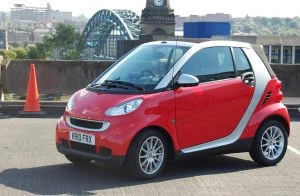
2010 Smart ForTwo
By far the smallest car being talked about in 2010 with excellent fuel consumption was the Smart ForTwo. It still fits into car parks like you wouldn’t believe! Small and safe, comfortable and peppy, any smart CBD commuter would be tempted by the tiny Smart ForTwo. It boasts a combined fuel economy figure that sits well under 5 litres/100 km – and this all coming from a ULP motor. Currently you can’t buy any new Smart car in Australia, though I’ve heard that, in the near future, they are making a comeback with purely electric power and with new design.
SsangYong
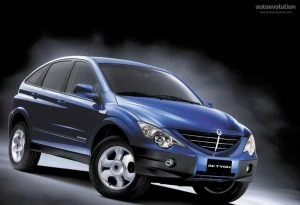
2010 SsangYong Actyon SUV
At the time, the 2010 SsangYong Actyon was about the most frugal SUV you could buy new at an impressively low price. The economic SUV has muscly looks and a rugged design that could see the vehicle handling tough off-road terrain with ease. SsangYong uses a 2.0 litre turbo-diesel engine in this vehicle, which packs over 300 Nm of torque to go with its excellent 4×4 underpinnings. Getting any 1.8 tonne vehicle to manage under 5 litres/100 km is a feat. So, well done to SsangYong! Currently, no more SsangYong vehicles quite match the excellent economy of an Actyon Diesel.
Suzuki
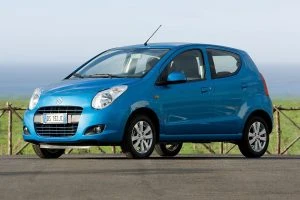
2010 Suzuki Alto
Budget priced, and one of the few petrol powered cars back in 2010 delivering awesome fuel economy was the Suzuki Alto. The Suzuki Alto 1.0 litre GL and GLX has an attainable fuel economy figure of 4.8 litres/100 km. The Suzuki Alto is also nice looking (bug-eyed), has six airbags, and even comes with ESP as standard in the GLX model. Great for around town – you’d be nuts to not consider an Alto.
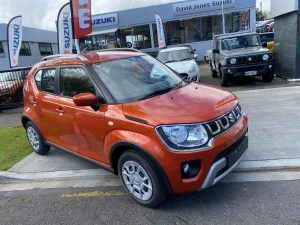
2022 Suzuki Ignis
There are no new Altos in 2022, but Suzuki do offer us the awesome little Suzuki Ignis GL Manual and GLX auto. These cars use a 1.2-litre ULP motor and deliver a similar fuel consumption to the 2010 Alto. Safety in new Suzuki cars has taken a big leap forward, so too has all the modern technology. Brand new Swift and Baleno models are definitely worth a look. These are also economy-driven cars with decent comfort, technology, and practicality.
Toyota
Where would the world be without Toyota? For a very frugal, spacious, and practical drive, the clean burning 2010 Toyota Prius III offered a 1.8 litre petrol hybrid engine. It didn’t come cheap, but it was certainly friendly on the environment. You could expect around 4.0 litres/ 100 km – sometimes better.
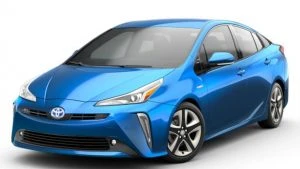
2022 Toyota Prius
You can now buy a 2022 Toyota Prius model for between $42–50k. These are nice cars and much more impressive to look at than the older models. They are safe and packed with excellent features. The Prius still continues with the same petrol-electric engineering that made it such a standout when it was launched in 2001. The same basic technology remains for the 4th-generation Prius, as well as all Toyota/Lexus hybrids these days. So, what a new Prius offers is a small-capacity 4-cylinder engine that works through a planetary gear set to dispense the delivery of power to the front wheels (or also the rear wheels in SUV variants). The current Toyota Prius is powered by a 72kW/142Nm 1.8-litre engine that combines with an electric motor to produce a joint maximum power output of 90kW and a claimed fuel consumption of 3.4 litres/100km. Better than ever! Toyota newest vehicles: the CH-R, Camry, Corolla, RAV-4, and Yaris Hybrid models are available with very low fuel consumption figures. Toyota and Honda are masters of the Hybrid-game, and have been for quite some time.
VW
Back in 2010, the Germans offered plenty of cars with excellent fuel consumption. Volkswagen has for a long time offered well-designed, reliable and fuel efficient motorcars. They are generally refined, elegant, and roomy, and the 2010 VW Golf 77TDI variant easily boasts fuel economy figures below 5 litres/100 km on a combined cycle.
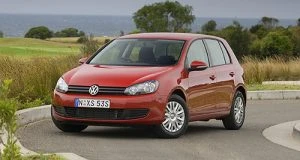
2010 VW 77TDI
2022 sees the Golf Hatch with 5 models, and in Wagon form it has a couple of nice new variants. The base models use a 110TSI 1.4-litre ULP motor, which is a 4-cylinder that is smooth and can return a claimed 5.8 litres/100 km. 250 Nm of torque offers muscle when you need it, and the car cruises at high speed effortlessly. The 8th-generation of the Golf brings not only fresh external and interior design, but it is also the safest, most tech-laden ever.
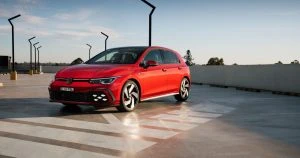
2022 VW Golf 110TSI
There are other new cars right across the auto-manufacturing spectrum now that offer superb fuel economy or EV power alone. It’s interesting how in that time (2010–2022) we’ve seen auto manufacturers taking a shift away from providing the new-car buyer with several frugal diesel family options to a fleet that is now a lot more Hybrid in flavour. It’s a change coerced by new government law and regulation. However, hybrid vehicles are superb automobiles that offer top fuel consumption figures and practicality, creating that much needed bridge between purely fossil fuel vehicles and completely EV-powered automobiles
Do check out the brand new arrivals. Cars like the Hyundai IONIC, Hyundai KONA, Kia EV6, Kia Niro, Mazda MX-30, BMW i and Hybrid models, Mercedes Benz EQA and EQC models, MG HS EV, Polestar cars, Tesla, and Volvo’s Recharge and Hybrid models are just some of the amazing new cars available that we can now buy that weren’t even a showing back in 2010.
Happy commuting!